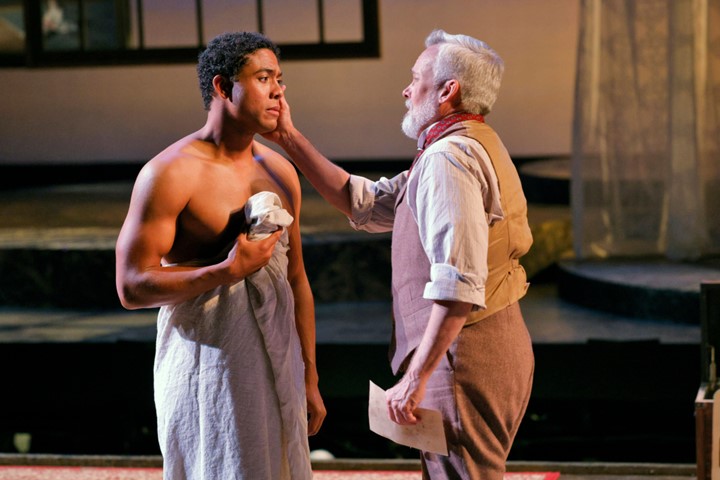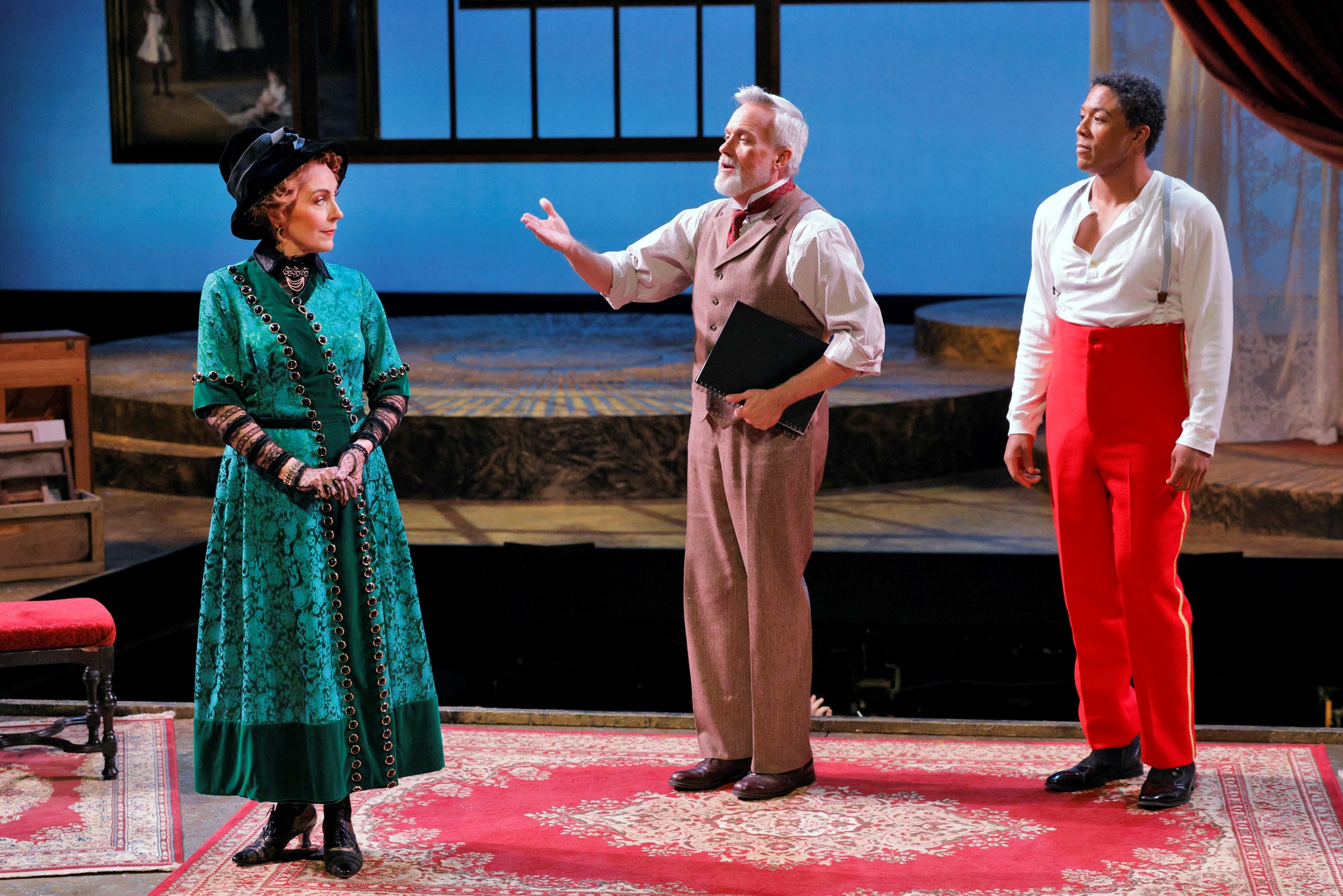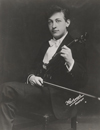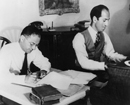Reviews
New Opera Wows the Crowd, but Not the Critic
The centerpiece of Des Moines Metro Opera’s 2024 season was the world premiere of the Damian Geter/Lila Palmer opera American Apollo, a chronicle of the years-long relationship between John Singer Sargent and his Black model, Thomas McKeller. This was not the first public outing for the work. Washington National Opera’s American Opera Initiative offered a 20-minute version in 2021; the next year, DMMO presented this as a second-stage event. Along the way to this summer’s full premiere, there have been workshops and libretto readings. But the finished product, seen at its July 13 opening night, made you wonder why, in the course of the elaborate development process, nobody ever questioned the project’s essential dramatic validity.

Justin Austin as McKeller and William Burden as Sargent in American Apollo
Palmer was moved to embark on her libretto after seeing a show of previously hidden works, at Boston’s Isabella Stewart Gardner Museum, that made clear that McKeller had been the model for many of the classical figures in Sargent’s work. The sketches and paintings, including a monumental nude study, are notable for their sensuality; it is not much of a stretch to surmise that the involvement between artist and model was romantic as well as professional.
The speculative affair at the center of American Apollo places McKeller and Sargent at the crux of hot-button societal issues, both sexual and racial. McKeller, looking at the white-skinned gods in Sargent’s paintings, demands to be seen for himself. A former model and lover of Sargent’s shows up to denounce the artist for his cavalier treatment in their relationship; McKeller wonders whether he will be similarly cast aside. Artist and model get together, break up, get together again, and break up again. But none of this ignites the piece; the pattern of estrangements and reconciliations gives a drama-killing sameness to the two-and-a-half-hour course of action.
Much of the problem lies in Palmer’s language. The libretto traffics in a kind of poetic abstraction. Its words seldom seem to spring from the characters who sing them: They explicate the issues, rather than illustrate them through characterization. When McKeller asks himself, “What does this body mean?,” it’s the librettist’s question, not the character’s. Palmer guides us toward the themes instead of creating dramatic moments that illustrate them. Moreover, her libretto fails on basic levels of craft: The character Ida Mae McDonald is clearly a sisterly presence in McKeller’s life, but the libretto doesn’t scruple to tell us just who she might be.

Mary Dunleavy as Isabella Stewart Gardner, with Burden as Sargent and Austin as McKeller
Geter’s score at its best displays a Samuel Barber-esque lyricism; at its worst it descends to anodyne noodling. But it seldom lends theatrical weight: The drama, such as it is, moves forward in dialogue rather than musical impulse. The vocal lines contain enough notes to deliver the text but seldom achieve any cohesive musical identity. In the first act, Sargent sits down at the piano to accompany himself in Reynaldo Hahn’s “À Chloris”––a lovely moment in itself, but one that serves to accentuate the dullness of its surroundings.
Given the work’s creative shortcomings, Justin Austin and William Burden, as McKeller and Sargent, cannot be faulted for failing to delineate texture in their relationship. But both contributed admirable work. The stunningly handsome Austin, often posing in near-nudity, persuasively made McKeller the object Sargent’s aesthetic and sexual passion, chiefly through his fine lyric baritone. Burden, now more than three decades into his career, has lost none of the gleam of his lyric tenor; his performance as Sargent was a display of sterling vocal and theatrical technique. Both men delivered the text so clearly that there was no need to glance at the surtitles.
Mary Dunleavy, another seasoned veteran, made Sargent’s patron Isabella Stewart Gardner into a figure both admirable and mildly foolish, with high notes used to simultaneously beguile and vanquish. Tesia Kwarteng cut an appealing figure in the underwritten role of Ida.
Shaun Patrick Tubbs’s staging had a “premiere production” feel to it; in both his work, and that of conductor David Neely, DMMO’s music director, there was a sense of striving to present the work as cleanly as possible, without any extraneous interpretive overlay. The chief element of Steven C. Kemp’s scenic design was a grouping of Sargent paintings framing the action; both these and David Murakami’s projections did an effective job of evoking the artist and his era. Special praise is due to intimacy coordinator Stephanie Schneider, who no doubt aided Austin and Burden’s forthright presentation of the physical connection between artist and model
Still, for all the craft on display, American Apollo never caught fire. In fairness, It should be mentioned that it got cheers and a standing ovation at its conclusion. Perhaps the audience was responding to Apollo’s lofty intentions rather than to the work.
Reviews of DMMO’s Pelléas et Mélisande and Salome will follow later in the week.





 FEATURED JOBS
FEATURED JOBS

 RENT A PHOTO
RENT A PHOTO


